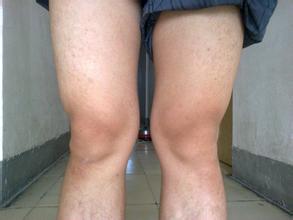Mota R, Costa F, Amaral A, Oliveira F, Santos CC, AyresDe-Campos D. Skin adhesive versus subcuticular suture for perineal skin repair after episiotomy—a randomized controlled trial. Acta Obstet Gynecol Scand 2009;88:660–6. (Level I)
55
Sultan AH, Thakar R. Lower genital tract and anal sphincter trauma. Best Pract Res Clin Obstet Gynaecol 2002;16: 99–115. (Level III)
56
Sultan AH, Monga AK, Kumar D, Stanton SL. Primary repair of obstetric anal sphincter rupture using the overlap technique. Br J Obstet Gynaecol 1999;106:318–23. (Level III)
57
Fernando RJ, Sultan AH, Kettle C, Thakar R. Methods of repair for obstetric anal sphincter injury. Cochrane Database of Systematic Reviews 2013, Issue 12. Art. No.: CD002866. DOI: 10.1002/14651858.CD002866.pub3. (Meta-Analysis)
58
Williams A, Adams EJ, Tincello DG, Alfirevic Z, Walkinshaw SA, Richmond DH. How to repair an anal sphincter injury after vaginal delivery: results of a randomised controlled trial. BJOG 2006;113:201–7. (Level I)
59
Stock L, Basham E, Gossett DR, Lewicky-Gaupp C. Factors associated with wound complications in women with obstetric anal sphincter injuries (OASIS). Am J Obstet Gynecol 2013;208:327.e1–6. (Level II-3)
60
Lewicky-Gaupp C, Leader-Cramer A, Johnson LL, Kenton K, Gossett DR. Wound complications after obstetric anal sphincter injuries. Obstet Gynecol 2015;125:1088–93. (Level II-2)
61
Duggal N, Mercado C, Daniels K, Bujor A, Caughey AB, El-Sayed YY. Antibiotic prophylaxis for prevention of postpartum perineal wound complications: a randomized controlled trial. Obstet Gynecol 2008;111:1268–73. (Level I)
62
Lamont T, Dougall A, Johnson S, Mathew D, Scarpello J, Morris E. Reducing the risk of retained swabs after vaginal birth: summary of a safety report from the National Patient Safety Agency. BMJ 2010;341:c3679. (Level III)
63
Priddis H, Dahlen HG, Schmied V, Sneddon A, Kettle C, Brown C, et al. Risk of recurrence, subsequent mode of birth and morbidity for women who experienced severe perineal trauma in a first birth in New South Wales between 2000–2008: a population based data linkage study. BMC Pregnancy Childbirth 2013;13:89. (Level II-3)
64
Brown HW, Wang L, Bunker CH, Lowder JL. Lower reproductive tract fistula repairs in inpatient U.S. women, 1979–2006. Int Urogynecol J 2012;23:403–10. (Level II-3)
65
Mahony R, Behan M, O’Herlihy C, O’Connell PR. Randomized, clinical trial of bowel confinement vs. laxative use after primary repair of a third-degree obstetric anal sphincter tear. Dis Colon Rectum 2004;47:12–7. (Level I)
66
Hedayati H, Parsons J, Crowther CA. Topically applied anaesthetics for treating perineal pain after childbirth. Cochrane Database of Systematic Reviews 2005, Issue 2. Art. No.: CD004223. DOI: 10.1002/14651858.CD004223. pub2. (Meta-Analysis)
67
East CE, Begg L, Henshall NE, Marchant PR, Wallace K. Local cooling for relieving pain from perineal trauma sustained during childbirth. Cochrane Database of Systematic Reviews 2012, Issue 5. Art. No.: CD006304. DOI: 10. 1002/14651858.CD006304.pub3. (Meta-Analysis)
68
HedayatiH,ParsonsJ,CrowtherCA.Rectalanalgesiaforpain from perineal trauma following childbirth. Cochrane Database of Systematic Reviews 2003, Issue 3. Art. No.: CD003931. DOI: 10.1002/14651858.CD003931. (Meta-Analysis)
69
Ching-Chung L, Shuenn-Dhy C, Ling-Hong T, ChingChang H, Chao-Lun C, Po-Jen C. Postpartum urinary retention: assessment of contributing factors and longterm clinical impact. Aust N Z J Obstet Gynaecol 2002; 42:365–8. (Level II-2)
70
Arona AJ, al-Marayati L, Grimes DA, Ballard CA. Early secondary repair of third- and fourth-degree perineal lacerations after outpatient wound preparation. Obstet Gynecol 1995;86:294–6. (Level III)
71
Barranger E, Haddad B, Paniel BJ. Fistula in ano as a rare complication of mediolateral episiotomy: report of three cases. Am J Obstet Gynecol 2000;182:733–4. (Level III)
72
Harvey MA. Pelvic floor exercises during and after pregnancy: a systematic review of their role in preventing pelvic floor dysfunction. J Obstet Gynaecol Can 2003;25: 487–98. (Meta-Analysis)
73
Peirce C, Murphy C, Fitzpatrick M, Cassidy M, Daly L, O’Connell PR, et al. Randomised controlled trial comparing early home biofeedback physiotherapy with pelvic floor exercises for the treatment of third-degreetears (EBAPT Trial). BJOG 2013;120:1240–7; discussion 1246. (Level I)
74
Sultan A, Kamm M, Hudson C, Thomas J, Bartram C. Anal-sphincter disruption during vaginal delivery. N Engl J Med 1993;329:1905–11. (Level II-3)
75
Farrar D, Tuffnell DJ, Ramage C. Interventions for women in subsequent pregnancies following obstetric anal sphincter injury to reduce the risk of recurrent injury and associated harms. Cochrane Database of Systematic Reviews 2014, Issue 11. Art. No.: CD010374. DOI: 10.1002/14651858. CD010374.pub2. (Meta-Analysis)
76



